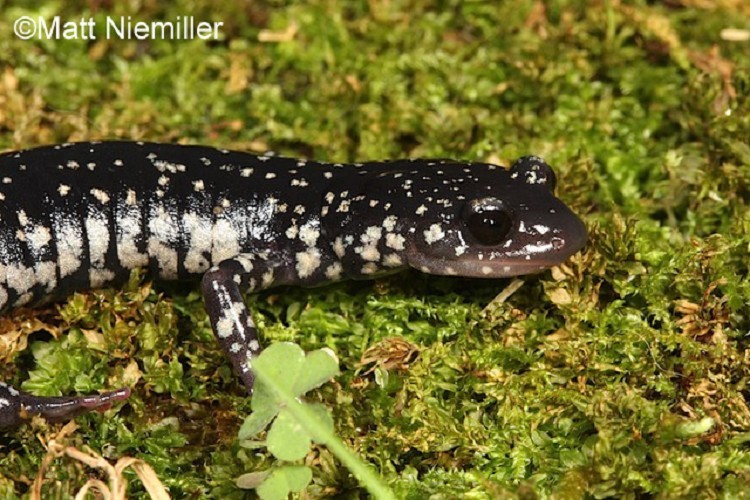Cumberland Plateau Salamander
Plethodon kentuckiFound only in the northern section of the Cumberland Plateau along the Tennessee-Kentucky border.
Description: A medium salamander (3.75 to 6.75 inches in length) has a black dorsum with small white spots that increase in size on the sides. The belly is uniformly slate gray transitioning into a lighter chin.
Similar Species:
- Northern Slimy Salamanders are slightly larger and have a dark chin; spots are larger and more frequent as well.
- Wehrle’s Salamander is dark gray or brown with yellow spots on the sides.
Habitat: Primarily occurs in steep-sloped mature hardwood forests with sandstone or shale underneath; yet can be found in a variety of woodland habitats such as moist ravines, rock crevices, and cave entrances.
Diet: Range of invertebrates such as mites, flies, spiders, snails, beetles, and ants.
Breeding information: Adults breed during late summer through fall. Females lay 9-12 eggs in underground cavities and remain with them until they hatch. Hatchlings emerge as miniature adults without going through the larval stage.
Status in Tennessee: Listed as “In Need of Management” by TWRA. Mature hardwood habitat vulnerable to timber harvesting.
Fun Facts:
- Breeding male Cumberland Plateau Salamanders have large mental glands, which is a gland on the chin of certain male salamanders that produces secretions used in courtship.
Best places to see in Tennessee: Mature hardwood forests in northern Cumberland Mountains.
